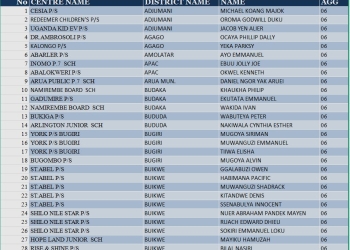
KAMPALA – Davis & Shirtliff and Huawei Technologies have entered into a strategic partnership to increase the availability of affordable high-end solar and digital power solutions to accelerate the transition of Ugandan homes and businesses to clean renewable energy.
The leading supplier of water and energy equipment in the East and Southern African region, will distribute Huawei’s solar products, including Grid Connect Inverters, Luna, and Power M backup solutions. Davis & Shirtliff’s robust distribution channels and extensive knowledge of the local energy market will be leveraged on to deploy Huawei’s innovative solar technology throughout the region.
“This partnership will accelerate the adoption of renewable energy in the country while reducing overall power costs to consumers in the long run, resulting in direct returns, especially those in the commercial and Industrial space,” said Davis & Shirtliff Uganda MD, Patrick Mufwoya.
“The prolonged lifespan of solar installations, combined with minimal operational costs, positions these systems to self-fund within a few years, providing sustained cost savings,” he added.
This pivotal alliance will also see the provision of comprehensive training and support programs to ensure the installation and maintenance of products are of the highest quality, thereby increasing their efficiency and lifespan.
The primary focus is on delivering integrated solutions for electrification projects in both urban and rural areas, leveraging Huawei’s capabilities to enhance energy management and improve energy efficiency.
“Our collaboration with Davis & Shirtliff is important because it represents a harmonious union of vision and deployment of capabilites. Together, we aim to reshape the renewable energy landscape and provide cleaner, more efficient and affordable energy for the Ugandan market,” Collins Mulei Mutua, Technical Service Manager, Huawei said.
In Uganda, the demand for clean and reliable power sources is driving the adoption of solar products. The adoption rate is the highest in areas where grid connectivity is either unstable or non-existent, with rural and peri-urban communities at the forefront of this growth. This will therefore go a long way in supporting the government’s initiative in developing minigrids in areas that are not served by the main grid.
Statistics show that around 50 % of the country’s population have access to any form of electricity and about 24 % have access to electricity for more than 4 hours per day. Out of its total energy supply, 92% is derived from renewable sources which is commendable and a sizable number of rural homes have been equipped with solar home systems.
“Rural areas have seen growth due to solar products being a primary source of electricity, while urban areas are adopting solar solutions for cost savings and energy independence,” said Davis & Shirtliff MD, Patrick Mufwoya.
Numerous commercial entities are currently focusing on sustainable energy solutions to secure power supply and manage electricity costs more effectively. At the same time, there is a growing number of institutions and public sector projects that are embracing large scale solar installations to meet their energy requirements in an eco-friendly manner.
“Moreover, this partnership is primarily aimed at EPC contractors who need reliable and high-quality solar products for their end-to-end solar installation projects,” he said during partnership lauch at the Hotel Africana in Kampala.

















